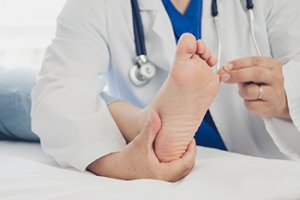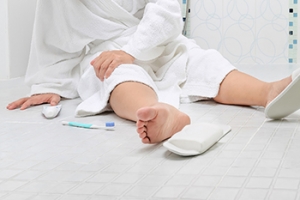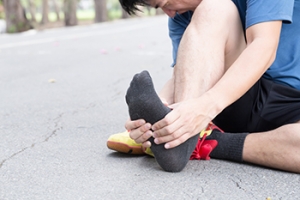Super User
Bunions
A bunion is a bony bump that develops on the outside of the big toe, at the base of the big toe joint. Over time, a bunion can cause the big toe to move out of its proper alignment and lean towards the second toe. The bunion may become painful, stiff, red, and swollen. Calluses sometimes form on top of the bunion as the bunion rubs against the inside of your shoe as you walk. Calluses can also form on the area where your big toe rubs against your second toe, or on the ball of the foot.
Bunions are extremely common, especially in older adults and women, although children can develop bunions or, in very rare cases, be born with them. What exactly causes bunions is unclear. They may occur as a result of a genetic predisposition due to the shape and structure of the foot or because of one’s gait. Wearing shoes that are too tight, have excessively high heels, or narrow, pointed toes may contribute to the development of bunions. Certain medical conditions, such as arthritis and flat feet, may make bunions more likely as well.
Bunions can be treated through conservative methods such as switching the shoes that you wear for shoes that are wider and more comfortable, wearing custom orthotics, wearing pads placed over the bunion to reduce pain, taking nonsteroidal anti-inflammatory medications, and icing the foot. When conservative treatments are not effective, invasive procedures may be recommended. For more information about bunions, please consult with a chiropodist.
Understanding the Differences Between a Chiropodist and a Chiropractor
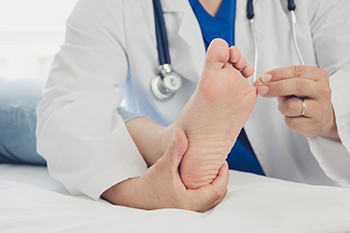
Some people confuse a chiropodist and a chiropractor because they sound the same. A chiropodist and a chiropractor are both healthcare professionals, but they focus on different areas of the body and treat distinct conditions. A chiropodist specializes in diagnosing and treating disorders of the feet and lower limbs. They use various techniques, such as foot and gait examinations, orthotic prescriptions, and provide other treatments to manage nail and skin disorders. On the other hand, a chiropractor specializes in neuromuscular disorders and primarily focuses on the diagnosis and treatment of conditions related to the spine and other joints. While a chiropodist deals with foot-related issues, such as bunions, heel pain, and ingrown toenails, a chiropractor's expertise lies in treating conditions such as back pain, neck pain, and joint problems. If you have a foot-related issue or concern, it is suggested that you make an appointment with a chiropodist.
If you have any foot or ankle concerns, contact one of the chiropodists of The Footcare Centre. Our chiropodists can provide the care you need to keep you on your feet.
A chiropodist is a healthcare professional that specializes in the feet, ankles, and lower limbs. With the amount of work the feet do in a lifetime, the whole body works better if the feet are properly supported. Chiropodists must have a bachelor’s degree in science and complete a three to four-year chiropody program. They can then work independently or as part of a team. Chiropodists are like podiatrists, the only difference being the country they obtained where they obtained their degrees. The field can be called podiatry in the United States and chiropody elsewhere. A chiropodist is a popular term for this profession in the UK and Canada. Chiropodists treat a variety of foot problems from corns and calluses to fungal infections. Some also offer orthotics. They might provide a variety of foot therapies, injections, and surgical procedures. Normally one sees a chiropodist when they are experiencing pain but visiting one regularly, as one would a dentist, can help ensure the feet are in top form and help prevent future problems. If you suffer from foot or ankle pain or have questions about your lower extremities, book an appointment with a chiropodist today.
What Does a Chiropodist Do?
A chiropodist helps people with problems with their feet and ankles with the goal of making their lives more comfortable. A chiropodist takes care of blisters, corns, bunions, cracked heels, nail problems, and sprained ankles, just to mention a few things that can go wrong with our feet. A chiropodist will take your medical history and examine your feet for blood circulation and any other problems going on. They will watch you walk and how you move when you walk. They will discuss any findings they come up with and discuss a treatment plan with you.
What Does It Take to Become a Chiropodist?
Chiropodists must have seven to eight years of post-secondary school before beginning to practice. They must obtain a bachelor’s degree in science and complete a three-to-four-year chiropody program. Chiropodists work independently or as part of a team.
If you have any questions please feel free to contact our office located in Niagara Falls, ON . We offer the newest diagnostic tools and technology to treat your foot and ankle needs.
Chiropodists
A chiropodist is a highly trained healthcare professional that provides the assessment, treatment, and management of chronic or acute foot and ankle problems. They aid in the prevention of injuries and disabilities and promote proper foot health for overall well-being. With foot problems being as prevalent as they are, the fact that the feet are the body’s foundation, and the necessity of keeping our feet as healthy as possible, chiropodists are needed to help with prevention, assessment, and treatment of issues that may arise with feet. When the feet are properly supported, the whole body works better. Chiropodists must have seven to eight years of post-secondary school before beginning to practice. They must obtain a bachelor’s degree in science and take a three to four year chiropody program. Chiropodists work independently or as part of a team. Chiropodists treat a variety of foot problems including bony foot deformities, corns, calluses, warts, fungal infections, nail conditions, and biomechanical dysfunctions. These healthcare providers also recommend or provide orthotics and insoles. They might also provide physical therapy, surgical procedures, injection administration, prescriptions, and various other therapies. Normally one sees a chiropodist when they are experiencing pain. However, visiting one regularly, as one would a dentist, can help ensure the feet are in top form and will help prevent future problems. If you suffer from foot or ankle pain or have questions about your lower extremities, book an appointment with a chiropodist.
Top Fall Prevention Techniques for Aging at Home
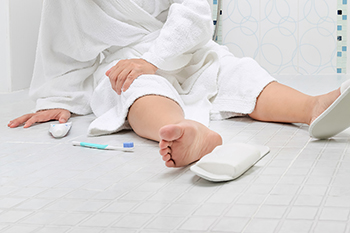
As we age, maintaining a safe and secure home environment becomes paramount to prevent falls, which can lead to serious injuries. Implementing simple fall prevention techniques can significantly enhance the safety and independence of seniors living at home. An effective technique can be to remove clutter. This can help to eliminate tripping hazards, ensuring clear pathways throughout the house. Placing sturdy handrails in hallways and staircases, and installing grab bars in bathrooms can provide adequate support and stability. Having good lighting will brighten up all areas, especially stairways and entrances, that can improve visibility and reduce the risk of missteps. Using non-slip mats or adhesive strips to secure rugs can be helpful in preventing accidental slips. Empowering aging individuals with these fall prevention techniques ensures they can continue to enjoy their independence and live comfortably in their own homes for as long as possible. It is suggested that you confer with a chiropodist who can give you additional methods on how to prevent falling.
Falls are a common but preventable problem for older adults. If you would like to learn more about preventing falls, please consult with one of the chiropodists from The Footcare Centre. Our chiropodists can help you maintain the health of your lower limbs and your mobility.
Did you know that most falls occur in the home? Fortunately, there are many simple changes that you can make to the living environment to reduce the risk of falling.
In the Bathroom:
Install grab bars near toilets, bathtubs, and showers
Put non-skid mats on all surfaces that may get wet
In the Bedroom:
Keep a light near the bed so that you can easily turn it on if you have to get up at night
Keep the path from your bedroom to the bathroom clutter-free and well-lit
Consider installing a bed rail for added support
In the Kitchen:
Use non-skid mats
Wipe up any spills immediately
Move commonly used items to areas that are easily within your reach
In the Hallways:
Place handrails on both sides of the stairs
Install good lighting in the hallways and around the entire home
Keep hallways free of clutter
Don’t use throw rugs or small area rugs
In Other Living Areas:
Keep loose cables, cords, and wires near the wall and away from walking surfaces
Make sure that all carpets and rugs are secure firmly to the floor
Arrange your furniture so that it is not in your way when you walk
Use chairs and couches that you can easily get up from
If you have any questions, please feel free to contact our office located in . We offer the newest diagnostic and treatment technologies for all your foot care needs.
Falls Prevention
Many older adults think that falls are rare and won’t happen to them, so they don’t need to take steps to reduce the risk of falling. This isn’t true, as falls are very common. Falls are one of the leading causes of serious injuries and disabilities among older adults. Not only does falling affect one’s physical health, but it can also cause psychological harm. An older adult who has fallen may lose confidence in their abilities to get around and live independently. They may feel that the only ways to prevent falling are to avoid physical activities and stay in the house when this can in fact be counterproductive.
Though staying in the house can be tempting for an adult that is afraid of falling, it’s worthwhile to note that over 50% of all falls occur in the home. A better way to prevent falls is to take steps to make your home safer. Remove tripping hazards, like loose cables, slippery rugs, and low furniture from the home. Install good quality lighting that will allow you to see where you are walking. In the bathrooms, use a non-slip bath mat and install grab bars in the shower to avoid slipping. When you do leave the house, don’t be ashamed to use a mobility aid, such as a cane, if necessary.
Reducing the risk of falling continues with taking care of one’s physical health. Exercising regularly and incorporating exercises that stretch and strengthen the lower limbs is important for maintaining mobility. Vision care is another key element of falls prevention, as people with vision impairment are more than twice as likely to fall than those who don’t have vision problems. Being able to clearly see where you are going and if there are any tripping hazards in your way will help prevent falls. Managing your medications can help prevent falls. Certain medications cause side effects that impair balance, leading to falls. You should talk to your doctors about the medications that you are currently taking, their side effects, and any ways that they may interact with one another. Finally, regularly seeing a chiropodist can help maintain your foot health and mobility. A chiropodist can not only treat any existing foot problems, which can contribute to falling, but also help you prevent future issues.
Risk Factors for Plantar Fasciitis
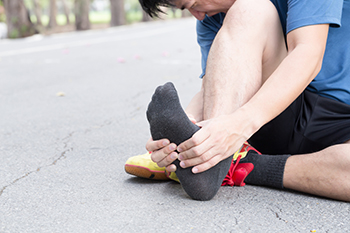
One of the most common complaints of heel pain comes from a condition known as plantar fasciitis. The plantar fascia is a wide band of tissue that runs from the toes to the heel. The main cause of plantar fasciitis is the degeneration of collagen in the area where the plantar fascia connects to the heel bone. The main function of the plantar fascia is to provide support for the arch and absorb pressure in the heel from prolonged standing, walking, or running. Symptoms are usually felt first thing in the morning after sleeping. Pain and stiffness develop and will generally get worse later in the day. Being overweight and overtraining are the two major causes of plantar fasciitis. People who have flat feet or high arches are also at further risk of developing plantar fasciitis. Rest, stretching and strengthening exercises are the best treatments for plantar fasciitis. A change of footwear that offers more cushioning and fits well, in addition to wearing custom orthotics, are other treatment options. For more information on managing plantar fasciitis, it is suggested that you make an appointment with a chiropodist.
Plantar fasciitis can be painful and interfere with your daily activities. If you are experiencing foot or heel pain and believe you may be afflicted with plantar fasciitis, please consult with one of the chiropodists from The Footcare Centre. Our chiropodists will assess your condition and provide you with quality foot and ankle treatment.
What Is Plantar Fasciitis?
Plantar fasciitis refers to the inflammation of the plantar fascia, a ligament that runs along the bottom of the foot and connects the heel bone to the toes. Repetitive activities, such as running or jumping, can injure the plantar fascia over time. Plantar fasciitis can also be caused by flat feet, high arches, pregnancy, and activities that put excessive pressure on your feet, like standing all day for work. When the plantar fascia becomes inflamed, it causes pain and discomfort.
Symptoms
Typical symptoms of plantar fasciitis include:
Stabbing pain near the heel
Pain that is worst in the morning or after a period of rest
Pain that increases after exercising
Swelling
Tightness in the Achilles tendon
Diagnosis
Plantar fasciitis is typically diagnosed via medical history and physical examination.
Treatment
Treatments for plantar fasciitis include resting and icing the affected foot, stretching the foot, taking medications to reduce inflammation, and wearing orthotics. In severe cases where pain does not improve with conservative treatments, injections or surgery may be recommended.
If you have any questions, please feel free to contact our office located in . We offer the newest diagnostic and treatment technologies for all your foot care needs.
Plantar Fasciitis
The plantar fascia is a thick ligament that runs along the bottom of your foot and connects the heel bone to the toes. When the plantar fascia becomes inflamed, typically due to overuse, it can cause a condition called plantar fasciitis. Plantar fasciitis is characterized by a sharp, stabbing heel pain, arch pain, and pain that is at its worst when taking your first steps after a long resting period, such as when you first wake up in the morning. You may also notice swelling on the bottom of the heel.
Plantar fasciitis is one of the most common foot ailments, and one of the most common causes of heel pain. Besides overuse from activities such as running or jumping, wearing shoes that do not have adequate cushioning and support, standing for prolonged periods of time, being obese, or having flat feet can all increase your risk of developing plantar fasciitis.
Fortunately, there are many treatments for this condition. Your chiropodist may recommend stretching exercises, activity and footwear changes, and icing the affected foot to help relieve pain. If pain persists after several weeks, your chiropodist may prescribe custom orthotics, pad, tape, strap, or immobilize the affected foot, or inject a corticosteroid into the area to reduce pain.
For more information about plantar fasciitis, please consult with a chiropodist.
Dealing With Athlete’s Foot
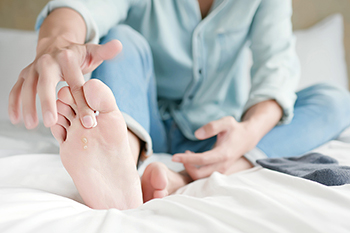
Athlete’s foot is a fungal infection, known as tinea pedis, that causes itching and scaling between the toes or on the bottom of the foot. The spaces between the toes can crack, split or peel, and blisters may develop. Because athlete’s foot is contagious, coming into contact with the infected area can easily spread the fungus to other parts of the body. This particular fungal infection thrives in warm and moist environments, such as sweaty socks, swimming pool shower areas, and gym locker rooms. A precaution for avoiding contamination is to wear some type of foot covering in these areas. Furthermore, washing the hands thoroughly if they have come in contact with the infected toes may help to limit the spread of athlete’s foot. Additionally, it is beneficial to avoid sharing towels and to disinfect the shower or bathroom spaces after use. It is also a good idea to expose the feet to fresh air as much as possible, in addition to wearing cotton rather than synthetic socks. If an athlete’s foot infection does not improve after applying antifungal cream, it is suggested that you make an appointment with a chiropodist for more advanced treatment options.
Athlete’s foot can be uncomfortable and unsightly. To learn more about preventing and treating this condition, please consult with one of the chiropodists from The Footcare Centre. Our chiropodists will assess your condition and provide you with quality foot and ankle treatment.
What Is Athlete’s Foot?
Athlete’s foot refers to an infection of the skin on the feet that is caused by a fungus. This fungus is contagious and thrives in warm and moist environments. It is often spread in common areas such as public pools, locker rooms, and showers. It can also spread when sharing personal items, like shoes or towels, with an infected person.
Symptoms
The symptoms of athlete’s foot may include:
Itching, stinging, or burning of the skin on the feet
Cracking or peeling skin, especially between the toes and on the soles of the feet
Scaly, red rash on the foot
Blisters
Foul odor
Treatment
Treatment for athlete’s foot typically involves using over-the-counter topical antifungal medications on the feet. When over-the-counter options are ineffective, you may need to take prescription oral medications or topical antifungal drugs, or a combination of both.
Prevention
Preventing athlete’s foot places an emphasis on good foot hygiene practices.
You can prevent athlete’s foot by:
Washing and drying your feet thoroughly every day
Wearing shoes when walking in public areas
Not sharing personal items, like shoes or socks, with others
Wearing shoes and socks made out of breathable materials
If you have any questions, please feel free to contact our office located in . We offer the newest diagnostic and treatment technologies for all your foot care needs.
Athlete's Foot
Athlete’s foot, also known as tinea pedis, is a fungal infection of the skin of the feet. The fungus that causes athlete’s foot lives and thrives in warm, moist environments such as public swimming pools, locker rooms, and showers. This fungus can infect the feet through a cut or crack in the skin. Athlete’s foot is also highly contagious, and the fungus can spread from person to person through sharing personal items such as shoes, socks, or towels.
The symptoms of athlete’s foot include itching, stinging, or burning between your toes or on the soles of your feet, itchy foot blisters, and dry, cracked, or peeling skin on the feet. The infection can also spread to your toenails, leading to discoloration, thickening, and crumbling.
Through a physical examination, athlete’s foot can be diagnosed by your chiropodist based on its symptoms. Sometimes, a skin test may be ordered to confirm the diagnosis. Athlete’s foot can be treated with both oral and topical over-the-counter or prescription medications. You can prevent a fungal infection by maintaining good foot hygiene, wearing shoes when walking in public areas, avoiding sharing personal items with others, and keeping your feet clean and dry.
